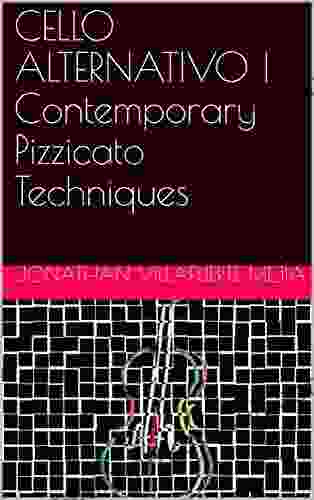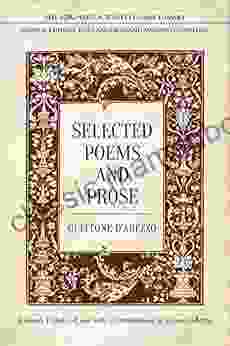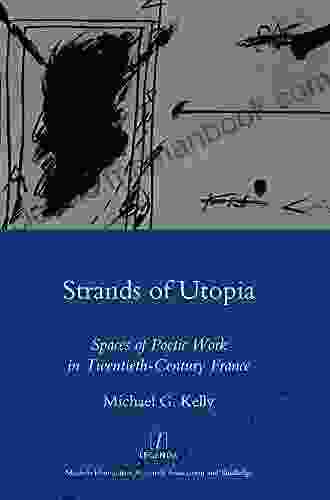Spaces of Poetic Work in Twentieth-Century France: Legenda Main and Beyond

The literary landscape of twentieth-century France was a vibrant and transformative one, marked by the emergence of groundbreaking movements and the exploration of new forms of expression. Amidst this literary revolution, a significant strand of poetic work emerged, characterized by its innovative use of space as a literary device. This article delves into the concept of "Spaces of Poetic Work" in twentieth-century French literature, examining the seminal work of Legenda Main and its influence on subsequent literary practices.
At the forefront of this literary innovation was the enigmatic Legenda Main, a collective of French writers active in the early decades of the twentieth century. Founded in 1924, Legenda Main sought to break away from traditional literary conventions and explore the uncharted territories of poetic expression.
One of the group's most distinctive contributions was their innovative use of spatial arrangements in their poetic works. They rejected the linear, chronological form of traditional poetry, instead opting for a fragmented and non-linear structure. In their groundbreaking collection "Legenda Main" (1926),they presented their poems as a series of disjointed fragments, each fragment occupying a distinct spatial position on the page. This unconventional approach allowed readers to navigate the poems in multiple ways, creating a multi-dimensional reading experience.
4.6 out of 5
| Language | : | English |
| File size | : | 2459 KB |
| Text-to-Speech | : | Enabled |
| Screen Reader | : | Supported |
| Enhanced typesetting | : | Enabled |
| Print length | : | 280 pages |
The spatial arrangement of Legenda Main's poems went beyond mere form; it also served as a metaphorical device to explore the fragmented and dislocated nature of modern society. The scattered fragments of text mirrored the fragmentation of human experience in the wake of the Great War, capturing the alienation and disorientation that characterized the era.
The innovative spatial practices of Legenda Main resonated with numerous poets writing in twentieth-century France. Following in their footsteps, a diverse group of writers emerged, adopting and expanding upon the spatial dimensions of poetic work.
Henri Michaux: The Belgian-French poet Henri Michaux experimented with the use of white space, margins, and calligraphic flourishes in his poems. By manipulating the visual elements of the page, Michaux created a dynamic and engaging reading experience that transcended the boundaries of traditional print.
Francis Ponge: Renowned for his precise and evocative descriptions, Francis Ponge often incorporated spatial elements into his poems to highlight the physicality and presence of objects. Through his meticulous attention to the arrangement of words on the page, Ponge sought to capture the intrinsic nature of things and their relationship to the surrounding environment.
Jacques Roubaud: A member of the OuLiPo (Ouvroir de littérature potentielle),Jacques Roubaud explored the possibilities of combinatorial literature, generating poems based on mathematical constraints and spatial arrangements. His works, such as "La Vieillesse d'Alexandre" (1978),demonstrate the intricate interplay between mathematical structures and poetic expression.
The spatial practices of twentieth-century French poetry often extended beyond individual works, creating intertextual spaces that fostered collaboration and appropriation. Poets engaged in dialogue with each other, referencing and recontextualizing elements from their predecessors' works.
Pierre Reverdy and Yves Bonnefoy: Pierre Reverdy's poem "Une petite fille de rien" (A Little Girl of Nothing) became the inspiration for Yves Bonnefoy's later work "Une petite fille de rien, ou, L'Adieu" (A Little Girl of Nothing, or, The Farewell). Bonnefoy's poem appropriates the spatial structure and imagery of Reverdy's original, while expanding upon its themes of loss and memory.
Henri Michaux and Jean-Luc Parant: Michaux's experimental use of white space and calligraphic marks was reinterpreted by the visual poet Jean-Luc Parant. Parant created works such as "L'Écriture d'Henri Michaux" (The Writing of Henri Michaux),where he transcribed Michaux's texts into a series of abstract spatial arrangements, blurring the boundaries between poetry and painting.
With the advent of digital technology in the late twentieth century, the frontiers of spatial poetics expanded further. Poets began to experiment with the capabilities of digital media, creating dynamic and interactive poetic spaces.
Jean-Marie Gleize: The French poet Jean-Marie Gleize used digital tools to create hypertext poems that allowed readers to navigate non-linearly through a network of interconnected texts. His work "Le Jardin-écriture" (The Garden-writing) presents a multi-dimensional textual landscape where readers can explore multiple perspectives and interpretations.
Pierre Alferi: Through his online poetry journal "Contrelittérature" (Counterliterature),Pierre Alferi promoted emerging digital poets and experimented with interactive forms of poetic expression. His website offers a platform for readers to engage with poems that explore the intersection of text, image, and sound, challenging traditional notions of literary space.
The exploration of "Spaces of Poetic Work" in twentieth-century France was a transformative and ongoing process that left a lasting impact on the literary landscape. Legenda Main's innovative spatial practices paved the way for a generation of poets to experiment with the physical and conceptual dimensions of their work. Beyond individual creations, these spatial explorations fostered intertextual dialogue and collaboration, while the advent of digital technology opened up new possibilities for dynamic and interactive poetic spaces. Through their innovative use of space, poets in twentieth-century France not only expanded the boundaries of literary expression but also captured the complexities of a rapidly changing world.
4.6 out of 5
| Language | : | English |
| File size | : | 2459 KB |
| Text-to-Speech | : | Enabled |
| Screen Reader | : | Supported |
| Enhanced typesetting | : | Enabled |
| Print length | : | 280 pages |
Do you want to contribute by writing guest posts on this blog?
Please contact us and send us a resume of previous articles that you have written.
 Top Book
Top Book Novel
Novel Fiction
Fiction Nonfiction
Nonfiction Literature
Literature Paperback
Paperback Hardcover
Hardcover E-book
E-book Audiobook
Audiobook Bestseller
Bestseller Classic
Classic Mystery
Mystery Thriller
Thriller Romance
Romance Fantasy
Fantasy Science Fiction
Science Fiction Biography
Biography Memoir
Memoir Autobiography
Autobiography Poetry
Poetry Drama
Drama Historical Fiction
Historical Fiction Self-help
Self-help Young Adult
Young Adult Childrens Books
Childrens Books Graphic Novel
Graphic Novel Anthology
Anthology Series
Series Encyclopedia
Encyclopedia Reference
Reference Guidebook
Guidebook Textbook
Textbook Workbook
Workbook Journal
Journal Diary
Diary Manuscript
Manuscript Folio
Folio Pulp Fiction
Pulp Fiction Short Stories
Short Stories Fairy Tales
Fairy Tales Fables
Fables Mythology
Mythology Philosophy
Philosophy Religion
Religion Spirituality
Spirituality Essays
Essays Critique
Critique Commentary
Commentary Glossary
Glossary Bibliography
Bibliography Index
Index Table of Contents
Table of Contents Preface
Preface Introduction
Introduction Foreword
Foreword Afterword
Afterword Appendices
Appendices Annotations
Annotations Footnotes
Footnotes Epilogue
Epilogue Prologue
Prologue Sidney Bristol
Sidney Bristol Diane Anderson
Diane Anderson Greg Rucka
Greg Rucka Mariah Emanii
Mariah Emanii Daniel Peyton
Daniel Peyton Debby Applegate
Debby Applegate Vanessa Tourinho
Vanessa Tourinho Tom Drury
Tom Drury Emmitt Greene
Emmitt Greene Marianne Wiggins
Marianne Wiggins Casey Michel
Casey Michel Michael G Kelly
Michael G Kelly Paul Johnson
Paul Johnson Lev Grossman
Lev Grossman Haylie Pomroy
Haylie Pomroy Kathi Daley
Kathi Daley Graham Harrop
Graham Harrop Erik Weir
Erik Weir Laurel Ulrich
Laurel Ulrich David Rooney
David Rooney
Light bulbAdvertise smarter! Our strategic ad space ensures maximum exposure. Reserve your spot today!

 Boris PasternakDinner Movie Eat Pray Love Healthy Fettucini Alfredo - The Basic Art of...
Boris PasternakDinner Movie Eat Pray Love Healthy Fettucini Alfredo - The Basic Art of...
 Edgar Allan PoeNo Logo, No Space, No Choice, No Jobs: The Impact of Corporate Power on...
Edgar Allan PoeNo Logo, No Space, No Choice, No Jobs: The Impact of Corporate Power on...
 Trevor BellSupport and Resistance Day Trading Strategies for Beginners: A Step-by-Step...
Trevor BellSupport and Resistance Day Trading Strategies for Beginners: A Step-by-Step...
 Herbert CoxExploring the Intimate World of Gerard Manley Hopkins: Uncovering the Private...
Herbert CoxExploring the Intimate World of Gerard Manley Hopkins: Uncovering the Private... Forrest BlairFollow ·19.3k
Forrest BlairFollow ·19.3k Quincy WardFollow ·18.4k
Quincy WardFollow ·18.4k Ernest ClineFollow ·10.3k
Ernest ClineFollow ·10.3k Cormac McCarthyFollow ·2.8k
Cormac McCarthyFollow ·2.8k Danny SimmonsFollow ·19.6k
Danny SimmonsFollow ·19.6k Gene SimmonsFollow ·7k
Gene SimmonsFollow ·7k Arthur MasonFollow ·10.6k
Arthur MasonFollow ·10.6k George HayesFollow ·14.9k
George HayesFollow ·14.9k

 Bryan Gray
Bryan GrayCello Alternativo: Exploring Contemporary Pizzicato...
: Embracing the Avant-Garde Within...

 Victor Hugo
Victor HugoThe Social Revolution: Barry Libert's Vision for a More...
In a world where...

 Tony Carter
Tony CarterA Comprehensive Guide to Crafting Clear and Effective Job...
A job description is a critical tool...

 Deacon Bell
Deacon BellSelected Poems And Prose Lorenzo Da Ponte Italian Library
Lorenzo Da Ponte, born...

 Francisco Cox
Francisco CoxWhat You Need To Know About Opportunity Cost: A...
Opportunity cost is a fundamental concept...

 Bill Grant
Bill GrantWhy Our Kids With Behavioral Challenges Are Falling...
Every year,...
4.6 out of 5
| Language | : | English |
| File size | : | 2459 KB |
| Text-to-Speech | : | Enabled |
| Screen Reader | : | Supported |
| Enhanced typesetting | : | Enabled |
| Print length | : | 280 pages |




